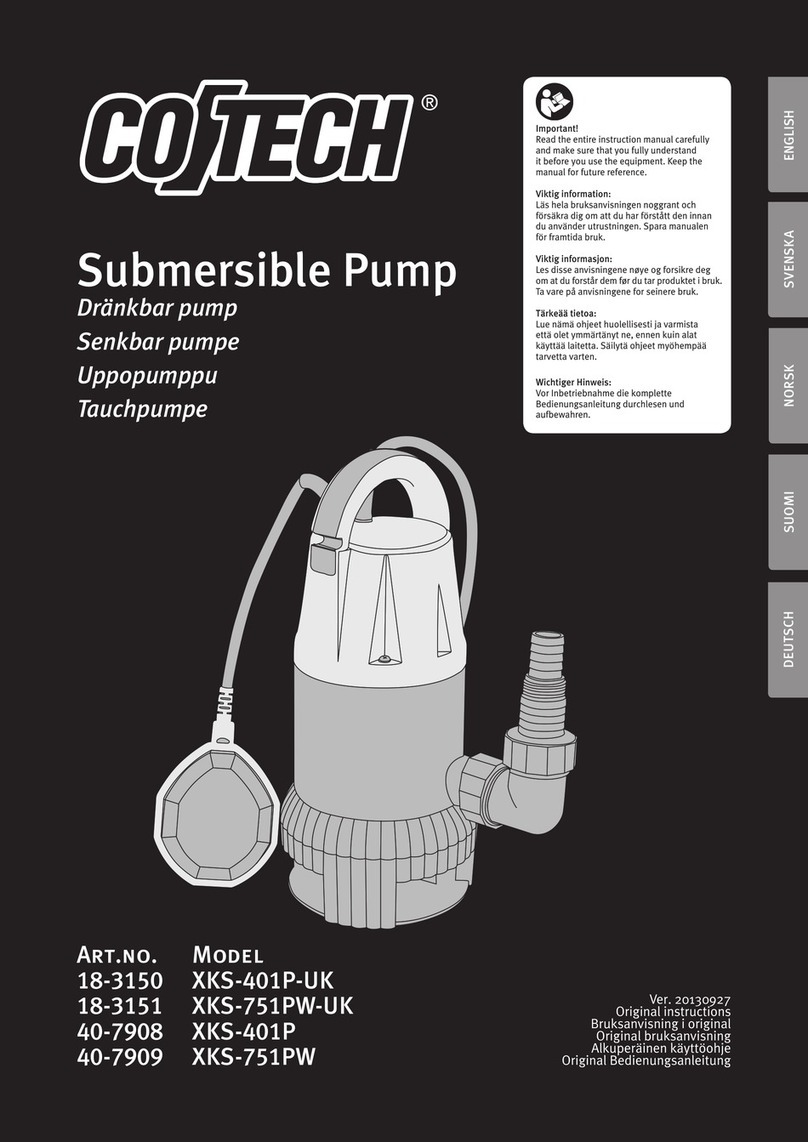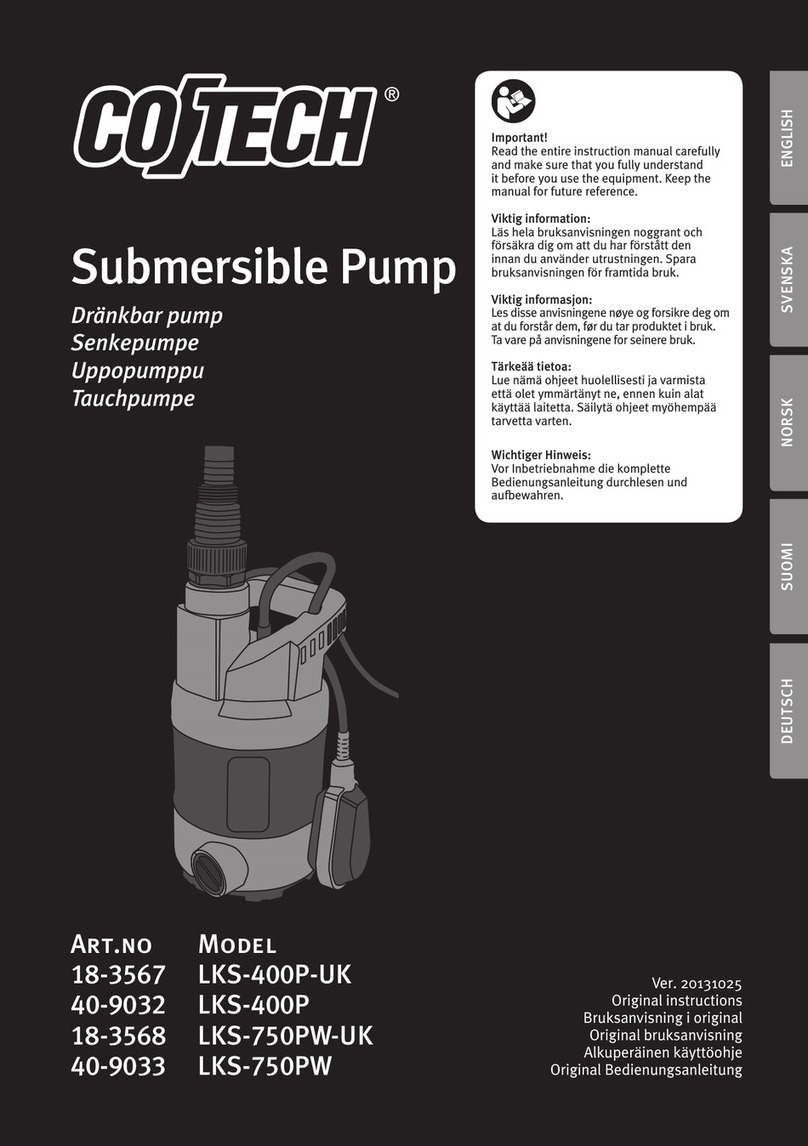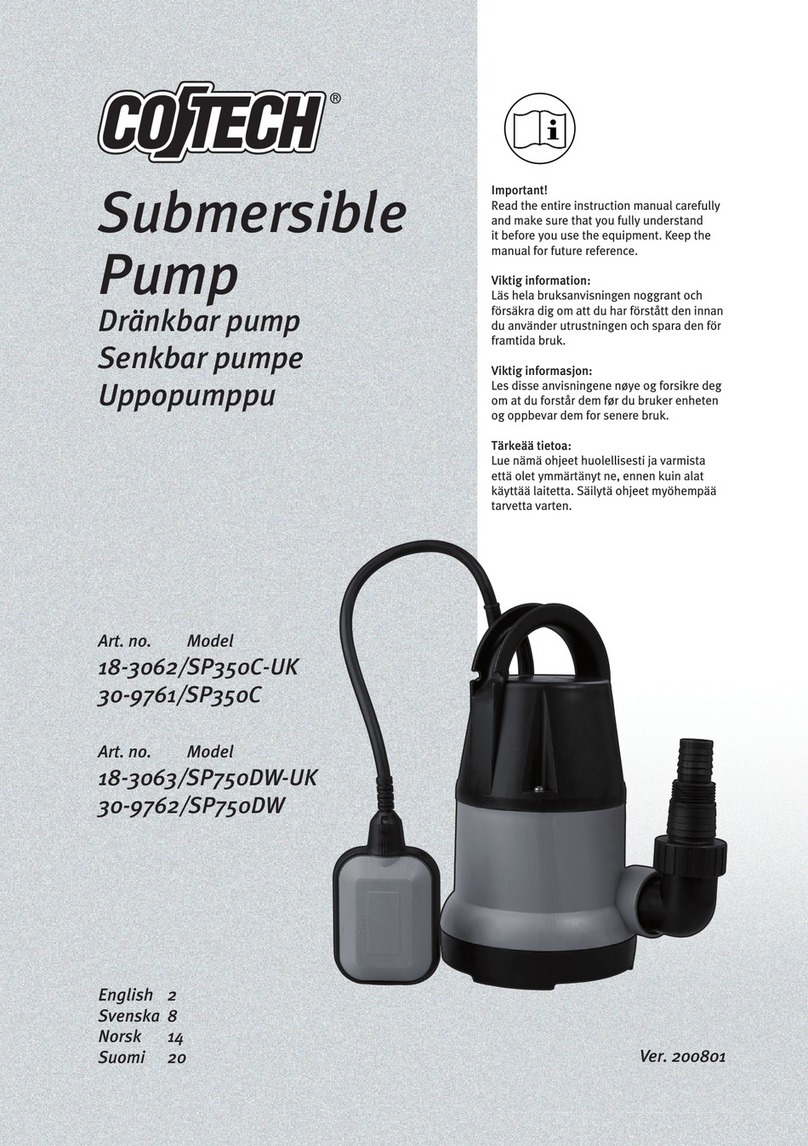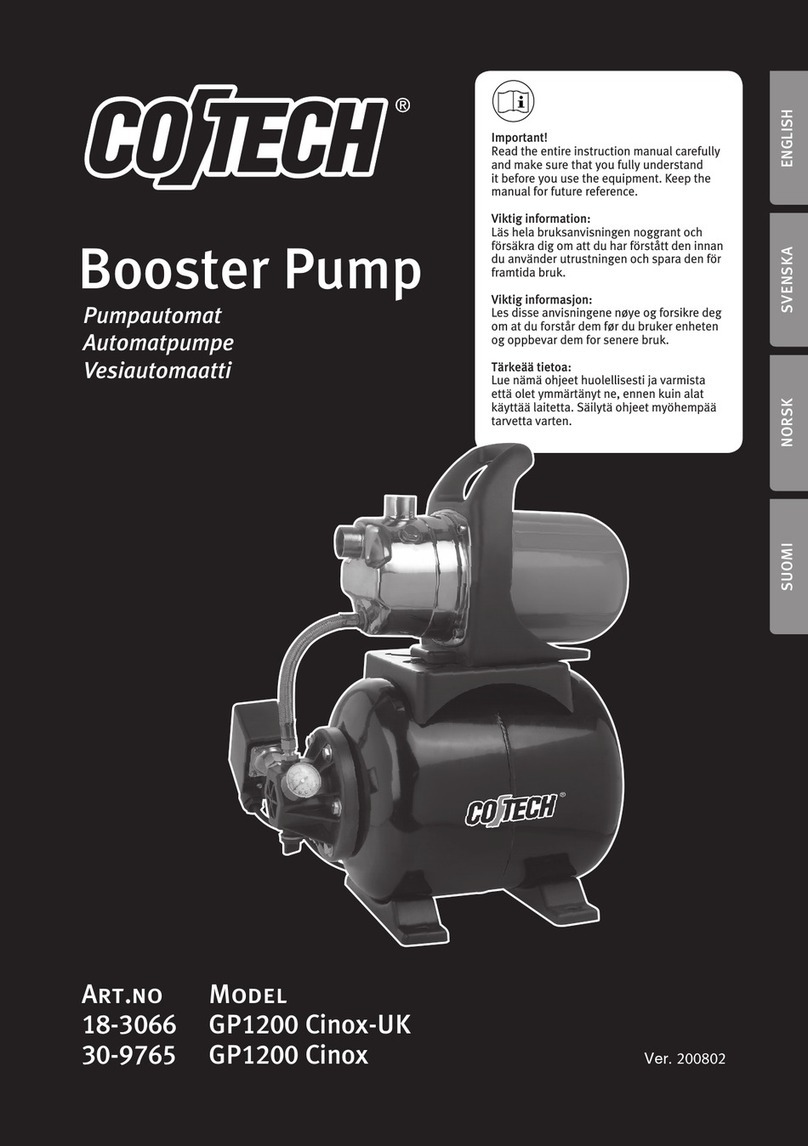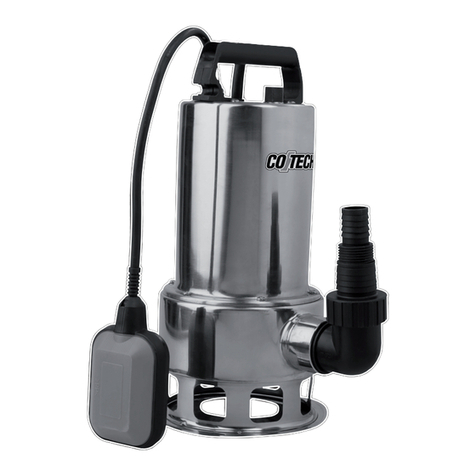
ENGLISH
8
Use ahose clip to fix thesuction hose to theinlet, secure tightly to avoid aleak. Checkthat
theinlet gasket is intact.
Fit theenclosed suction filter on theother end of thesuction hose and secure it by using ahose clip.
Theinlet filter reduces therisk of thepump becoming clogged or damaged by contamination.
5.4 Fitting the pressure hose
Attach apressure hose (not enclosed) to theoutlet on thepump. It should be as short as
possible and have as large adiameter as possible. This reduces theresistance and increases
thecapacity, while theopposite (a long and narrow hose) greatly reduces thecapacity.
If thepressure hose is equipped with ashut-off valve or anozzle that can be closed, do not use
it to shut off theflow for longer periods of time, thepump may become overheated.
Do not tighten theoutlet adapter too hard, it may damage thethreads.
5.5 Refilling the pump housing with water
Remove thefilling plug on top of thepump housing before starting theengine, and fill theentire
pump housing with water, put thefilling plug back in its place and tighten it securely.
Running thepump dry harms theseals.
If thepump has been run dry after all: immediately turn off theengine and let thepump cool off,
then refill thepump housing with water.
5.6 Start the engine
1. When starting acold engine: close thechoke (upwards).
2. When starting awarm engine: open thechoke (downwards).
3. Set thethrottle lever to half way.
4. Push theprimer pump about 8 times, until there is fuel coming through thetransparent return
tube on thecarburettor.
5. Hold on to thecarrying handle with one hand; pull out therecoil starter handle until
resistance is felt, then jerk therecoil starter handle. Holdon to thehandle after theattempt to
start and slowly release it back, never let go of thehandle entirely after thepull, it might get
entangled or break something on thepump.
6. Carefully switch thechoke to theopen position (downwards) once theengine becomes warm.
5.7 Set the required rotation speed of the engine
Turn thethrottle lever to full throttle to let thepump begin suction, control theflow
in thepressure hose.
The flow of thepump is adjusted by changing therotation speed of theengine.
Increase thegas to increase theflow, and reduce it to reduce theflow.
5.8 Turn off the engine
Quick shut off in case of danger: Press thestop button and hold until theengine has
stopped completely.
Normal shut off: 1. Turnthethrottle lever to idling and let theengine
wind down.
2. Pressthestop button.
Open thedraining plug and let thewater out of thepump housing, rinse thepump housing with
clean water and let it drain out, replace thedraining plug and tighten it.



















